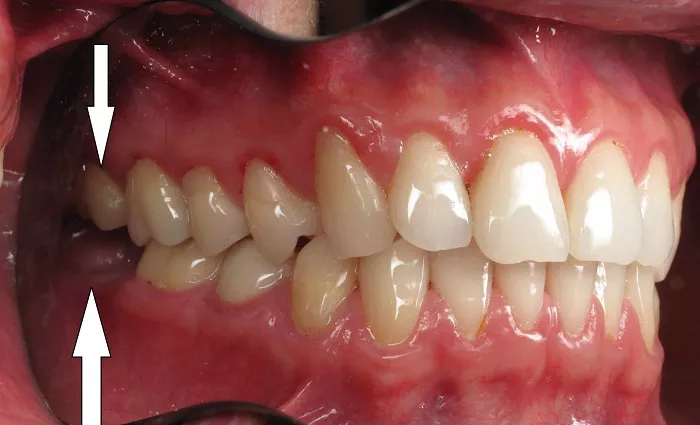When it comes to dental restorations for back teeth, composites have become a popular choice. Back teeth, also known as posterior teeth, play a crucial role in chewing and grinding food. The selection of appropriate composites for these teeth is essential to ensure both functionality and aesthetics. In this article, we will explore the various composites available for back teeth, their characteristics, advantages, and considerations for their use.
Types of Composites for Back Teeth
Microhybrid Composites
These composites are a combination of small filler particles and resin matrix. They offer good strength and wear resistance, making them suitable for restoring posterior teeth. The filler particles help to distribute the occlusal forces evenly, reducing the risk of fracture. For example, they can be used to fill small to moderate-sized cavities in molars and premolars. The typical filler content ranges from 60% to 70%, which contributes to their relatively high strength.
Advantages: Good compressive strength, can withstand the forces of chewing. They also have acceptable esthetics, with a color range that can be matched to the natural tooth color.
Considerations: While they have decent wear resistance, they may not be as durable as some other composites in high-stress areas over a long period.
Nanohybrid Composites
Nanohybrid composites contain nanosized filler particles. These particles provide a smoother surface finish compared to microhybrid composites. They have excellent esthetics, which is beneficial for visible areas of back teeth, such as the buccal surface of molars. The filler content is usually around 70% – 80%.
Advantages: Superior polishability, which helps in maintaining a clean and esthetic appearance. They also have good flexural strength, allowing them to adapt to the dynamic forces in the mouth.
Considerations: Although they have good strength, in extremely heavy occlusal load areas, they might show some signs of wear over time.
Bulk Fill Composites
Bulk fill composites are designed to be placed in thicker layers, reducing the number of layers and the overall time required for the restoration. They have a higher depth of cure compared to traditional composites. This is especially useful in larger posterior restorations. For instance, when a large cavity extends deep into the tooth structure.
Advantages: Time-efficient, as fewer layers need to be placed and cured. They also have acceptable strength and esthetics.Some bulk fill composites have self-leveling properties, which simplifies the placement process.
Considerations: The depth of cure may vary depending on the brand and formulation. In very deep cavities, additional curing steps or a liner might be needed to ensure proper polymerization.
Flowable Composites
Flowable composites have a lower viscosity, allowing them to flow into small and difficult-to-reach areas. They are often used as a liner or in combination with other composites in posterior restorations. For example, they can be used to fill the undercuts or small fissures before placing a more rigid composite.
Advantages: Excellent adaptability to the tooth structure, ensuring a good seal. They can also be used to repair small enamel defects.
Considerations: Their lower viscosity means they have relatively lower strength compared to other composites. They are usually not used alone for large restorations in back teeth.
Clinical Considerations
Occlusal Forces
The back teeth are subjected to significant occlusal forces during chewing. When selecting a composite, it is important to consider its compressive and flexural strength. Composites with higher filler content and appropriate resin matrix formulation are better able to withstand these forces. For example, in patients with a heavy bite or parafunctional habits like bruxism, a stronger composite like a microhybrid or a bulk fill composite with good wear resistance may be preferred.
Aesthetics
Although back teeth are not as visible as front teeth, aesthetics still play a role. A composite that can match the color and translucency of the natural tooth is desirable. Nanohybrid and some microhybrid composites offer a good range of colors to achieve a natural-looking restoration. In cases where the buccal surface of a posterior tooth is more visible, a composite with better polishability like a nanohybrid can enhance the overall appearance.
Cavity Size and Shape
The size and shape of the cavity influence the choice of composite. For small cavities, a flowable composite can be used as a liner followed by a more rigid composite for the final restoration. In larger cavities, bulk fill composites can save time and ensure proper polymerization. Deep cavities may require additional measures like a calcium hydroxide liner to protect the pulp and then a suitable composite for the restoration.
Patient Factors
Patient’s age, oral hygiene habits, and diet also affect the choice of composite. Elderly patients may have different wear patterns and requirements compared to younger patients. Patients with poor oral hygiene may need a composite that is more resistant to plaque accumulation. Those with a diet high in acidic or abrasive foods may require a more durable composite to withstand the potential damage.
Conclusion
In conclusion, there are several types of composites available for back teeth, each with its own set of characteristics, advantages, and considerations. Dental professionals need to carefully evaluate the patient’s specific needs, including occlusal forces, aesthetics, cavity size and shape, and patient factors, to select the most appropriate composite for posterior tooth restorations. By making an informed choice, dentists can ensure successful and long-lasting restorations that not only restore the function of the back teeth but also maintain or improve the patient’s oral health and overall well-being. The continuous development and improvement of composite materials offer more options and better outcomes for dental restorations in the posterior region, and further research and innovation in this field are likely to bring even more advanced solutions in the future.

